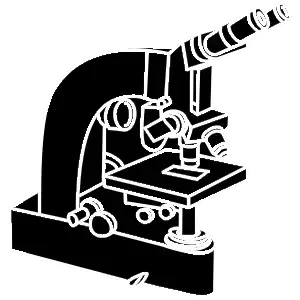Scientists who carry out research on cancer, genetics or infectious diseases often study cells under a microscope. The light microscopes they use involve looking through a lens at a microscopic object through which light is shone. However, some cells absorb so little light that they are hard to see in this way.
Dyes
This is why researchers prefer to use a so-called fluorescence microscope. This microscope involves dyes that are injected into cells and that light up when they come into contact with light, so that even cells that absorb little light become visible.
In the improved version of the microscope developed by Johan Sebastiaan Ploem the light is no longer shone through the cell, but it simply falls on it. This is achieved primarily with blue and green light, which often creates a much stronger fluorescence effect. This improvement has made microscopes even better. Ploem’s invention now plays a crucial role in cancer research, the diagnosis of infectious diseases and genetics.
Indonesia
Johan Sebastiaan Ploem was born in 1927 in Sawahlunto, Indonesia. He studied medicine in Utrecht and trained in epidemiology at Harvard University. In 1967 he obtained his PhD at the University of Amsterdam on his research on fluorescence techniques.
In 1975, at an international symposium in Leiden, Ploem’s newly invented microscope was referred to as ‘an extraordinary innovation that has lifted immune-cytology to a new order of effectiveness’.
In 1980 Ploem was appointed Professor of Cellular Biology in Leiden. The German company Leitz was the first to bring a Ploem microscope onto the market under the name Ploemopak. Prototypes of this fluorescence microscope can now be viewed in the Boerhaave Museum. All microscope manufacturers still sell a part named after Ploem: the so-called Ploem filter cube. The Ploem microscope has become the worldwide standard for fluorescence microscopy in research into medicine and biology.

